8 Best Night Vision Goggles of 2025 – Reviews & Top Picks
Last Updated on
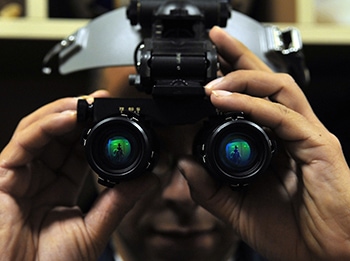
It can be challenging to choose a pair of night vision goggles for personal use because there are so many different models available. There are multiple generations of night vision, and each generation has profound advantages over the last. Each successive generation is also much more expensive than the previous one.
If you need help deciding which generation of night vision you need, and which model within that generation is worth your money, we can help. We’ve already reviewed dozens of the best night vision goggles in every generation, and we’ve chosen several models that we believe are good enough to present to you. We’ll go over everything we like and don’t like about each model.
We have also included a night vision buyer’s guide where we break down and explain every aspect of how the goggles work so you can see first-hand what essential features you need in the model you choose.
Keep reading for our detailed reviews of each brand of night vision goggles, where we compare size, safety, output, and fan strength to help you make an educated purchase.

A Quick Glance at Our Favorite Picks of 2025:
| Image | Product | Details | ||
|---|---|---|---|---|
| Best Overall |
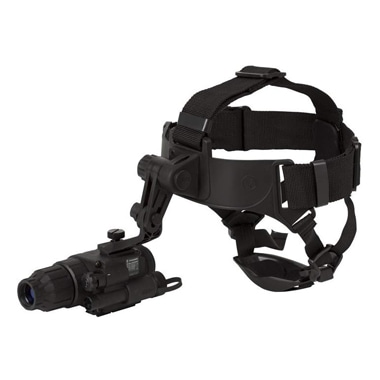 |
Pulsar PL74095 Night-Vision Goggles |
|
CHECK PRICE |
| Best Value |
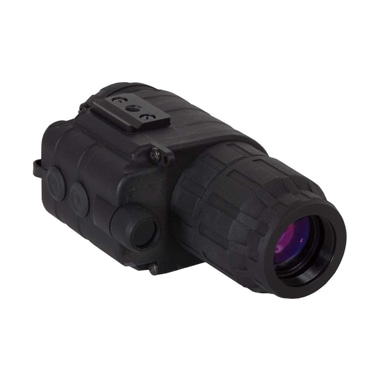 |
Sightmark Night Vision Goggles |
|
CHECK PRICE |
| Premium Choice |
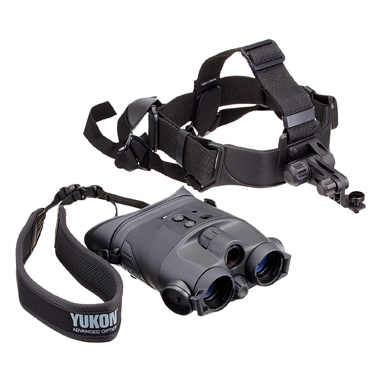 |
Yukon NV Goggles |
|
CHECK PRICE |
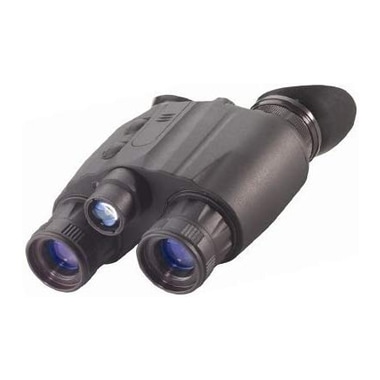 |
Night Optics Night Vision Goggle |
|
CHECK PRICE | |
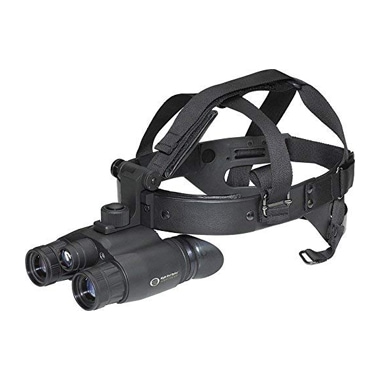 |
Night Owl Night Vision Binocular Goggles |
|
CHECK PRICE |
The 8 Best Night Vision Goggles:
Let’s take a look at the different models of night vision goggles we have chosen to review.
1. Pulsar PL74095 Night-Vision Goggles – Best Overall

The Pulsar PL74095 Night Vision Goggles is our choice for the best night vision goggles overall. The monocular feature Generation 1 technology with enhanced imaging. It features a built-in infrared torch for when there isn’t enough natural light available in the field. It includes headgear mounting screws for mounting in front of either eye.
While reviewing the Pulsar, we found the image bright and clear, and we rarely needed the infrared for additional light. The image-enhancing technology did an excellent job of removing distortion around the edges of the screen.
The only downside to the Pulsar that we experienced was that the infrared torch wasn’t as strong as we would have liked, and the image is a little bright for one eye.
- Clear image
- No distortion around the edges
- Headgear included
- IR light not that strong
2. Sightmark Night Vision Goggles – Best Value

The Sightmark SM14070 Night Vision Goggle is our pick for the best night vision goggle for the money, and after you see what it has to offer, we believe that you will agree it is the best night vision goggles for the money. The Sightmark Ghost Hunter series goggles are monoculars that feature Gen 1 technology. It features an active mode that uses infrared technology to enhance images. The passive mode turns off the infrared and allows natural light collection. It features an automatic shut off protection from bright light it’s housed in a durable hard plastic case
The downside to the Ghost Hunter was that it was hard to focus due to its extreme sensitivity.
- Active and passive mode
- Automatic shutoff
- Durable housing
- Hard to focus
3. Yukon NV Goggles – Premium Choice

The Yukon 1825025 NV Goggles is our pick for premium choice, and these night vision goggles are for those that want the best and aren’t afraid to spend a few extra dollars to get it. These goggles feature a soft rubber grip that feels more secure in your hands and will give the binoculars an extra layer of protection if they should accidentally fall. It uses Gen 1 technology and features a powerful pulsing infrared torch. The pulsating action of the infrared torch combines a high level of illumination along with energy conservation. Your batteries will last quite a bit longer in the Yukon. The controls are easy to use, and the battery compartment is easy to access.
We didn’t like the attached lens covers because they are easily broken off by a stray branch or twig while walking through the woods. The headgear is also a little uncomfortable.
- Pulsating infrared torch
- Easy to use
- Longer battery life
- Attached lens covers
- Uncomfortable headgear
4. Night Optics Night Vision Goggle

The Night Optics USA NG-2MV-1G Night Vision Goggles are for the casual adventurer. These goggles use Generation 1 to illuminate a wide field in front of you. The infrared torch is focusable so you can get a wide dimmer view or a narrow bight view depending on your needs. We found the image bright and clear, and we could easily walk through the night woods and see wildlife.
The 1X-magnification does not offer anything in the way of focus, so if there’s any problem with the lenses, you can’t focus it out. We also found the headgear challenging to adjust, and if you look at the night vision goggles from across the room, you will see a red light.
- Bright clear image
- Focusable infrared
- Difficult to adjust headgear
- A visible red light on goggles
5. Night Owl Night Vision Binocular Goggles

The Night Owl NOBG1 Night Vision Binocular Goggles are compact goggles featuring Gen 1 technology. The powerful infrared torch will illuminate your surroundings up to 450 feet away. We thought it provided a wide view with a clear image out to about 30 yards. Beyond the 30-yard mark, objects become increasingly blurry and grainy.
The headset is comfortable, but the goggles don’t fit on it very well, and the chinstrap is very flimsy. We also had a lot of focus issues with this model.
- Wide-angle view
- Comfortable headset
- Goggles are difficult to attach to the headset.
- Flimsy chinstrap
- Hard to focus
6. ATN Night Vision Goggle
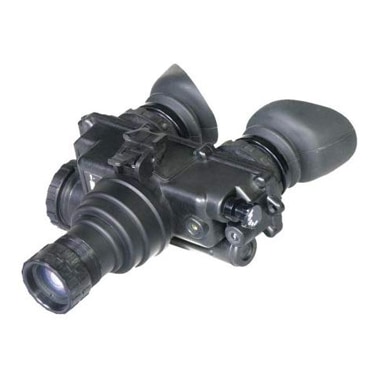
The ATN PVS7-3 Night Vision Goggle is designed to be identical to the AN/PVS-7, a standard military issue goggle. This night vision goggle can be helmet-mounted, head-mounted, or hand-held. It features powerful Generation 3 technology and has an IR switch that allows for momentary or continuous flooding of the environment with infrared light from the powerful IR torch. It has automatic brightness control, a bright light cut-off, automatic shutoff, and a low battery indicator. It’s also waterproof. We enjoyed using this scope and found it had a bright and clear image we could see well into the distance, and it only requires 2 AA batteries.
The price tag on this model is very high, as are any Gen 3 devices. We also found it very difficult to attach the headgear, and some of the connectors needed to attach it to a helmet are missing.
- Generation 3
- Waterproof
- Clear image
- Long-range
- Military-grade
- Very expensive
- Difficult to attach to head
- Some parts not supplied
7. Armasight Night-Vision Goggles
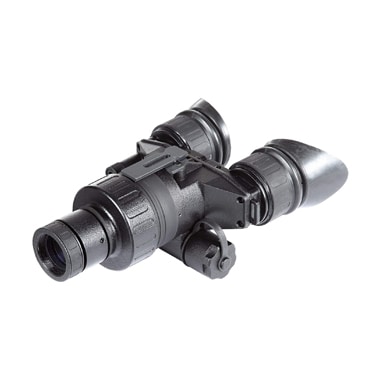
The Armasight Nyx7-ID Night Vision Goggles are compact Generation 2 goggle powered by a single lithium battery. It features a wide-angle infrared torch foe an extra boost of light when you need it. It comes with a 1X-lense, but you can also purchase 3X, 5X, and 8x zoom lenses. It features automatic brightness control and automatic bright light shutoff.
We felt that the image was a little dim on this model and grainy.
- Gen 2
- Wide-angle infrared
- Dim display
- Grainy image
8. Superior Tactical Night Vision Goggle
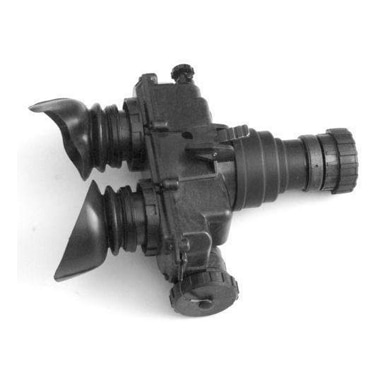
The Superior Tactical PVS-7 Night Vision Goggle is the last model on our list, and while it may not be as great as our top three night-vision goggles, there might still be a few things about it that interest you. It features Gen 3 technology for one thing. It’s also waterproof and very lightweight at under 2 pounds. We found the image to be bright and clear, with very few dark spots clouding the view.
The downside to these goggles is the lack of accompanying headgear. Many other models on this list come with at least a minimum amount of headgear. There is also no serial number or marking of any type to identify it stolen. There is also the high cost of Generation 3 technology.
- Generation 3
- Lightweight
- Clear image
- Expensive
- No headgear
- No identifying markings

Buyer’s Guide – Choosing the Best Night Vision Goggles
Let’s discuss some of the different things we need to look for when choosing night vision goggles.
What is Light?
To understand how night vision works, we need to understand a little bit about light. In many ways, light is very similar to sound, and they are both types of radiation that travel through the air at various frequencies. When we listen to sound, we perceive a sound with a higher frequency as having a higher pitch. A sound with a lower frequency will have a lower pitch. When we create music, we manipulate these frequencies to create a melody.
When we are looking at light, we see the different frequencies as colors. The lowest-pitched color we can see is red, then orange, red, green, and purple is the highest pitch color we can see.
Unfortunately, just like with sound, our eyes only pick up a small range of frequencies, and there are many, many more colors if only we could see them.
Ultraviolet
As we said, purple is the highest pitch color we can see, anything higher than that is Ultraviolet. The key is in the name ULTRA-violet, meaning more, or higher than purple.
Ultraviolet light is harmful to our skin and can cause burning and skin cancer. Ultraviolet light is also a disinfectant used for sterilization of hospital tools.
Infrared
The lowest pitch color we can see is red. Any light with a lower pitch than red is Infrared. Once again, the key is in the name, INFRA-red, meaning below red.
Infrared is something we can use to see in the dark. Heat gives off light. It’s easy to see when looking at a glowing red metal rod, but it might be harder to understand that it was producing light before it was red, it was just too low pitched to see. In fact, you are giving off light right now that’s too low-pitched to see.
Thermal Imaging
Technology allows us to see what we ordinarily could not. If we think about music one more time. Most of us know that if we speed up music, it will raise the pitch. If we slow down music, it lowers the pitch. Changing the pitch of a sound is called transposing.
We can also use tools to change the pitch of light, and that is how thermal imaging works. Let’s consider this example.
Example
- Steel starts to glow red at around 900 degrees
- The human body is about 98.6 degrees
- A warm engine is around 200 degrees
- Cooked food is around 160 degrees
- Room temperature is 68 degrees
A thermal sensor detects the temperature of these items in the environment, and technology digitally adds 820-degrees to everything it sees.
- The human body reads as 918.6 degrees
- A warm engine reads as 1020 degrees
- Cooked food reads as 980 degrees
- Items at room temperature will read as 888 degrees
Using thermal imaging, the human body, the engine, and the cooked food will all glow red because they are over 900 degrees. Items at room temperature will not glow because they remain under 900 degrees. The engine will be much brighter than the human body and may even appear orange or yellow because it is much hotter.
In the field, this is how night vision goggles equipped with thermal imaging will work. Thermal imaging will be more effective in colder environments where there is more contrast in temperatures.
It’s also possible to use an infrared flashlight to spread a beam of infrared light the same way a flashlight spreads ordinary light. We can then use our thermal imaging binoculars to look at the landscape.
Photo Electronics
Thermal imaging gives us a clear image of objects that give off heat, but they are very vague about the objects surrounding them. You cannot get a proper view of the landscape using thermal imaging. To do that, we need to use photo electronics to see more like an animal.
Photo electronics use lenses, mirrors, and sensitive devices called photocathodes to collect any ambient light. This technology will see any light, no matter how little, concentrate it, and amplify it. This technology turns light into electricity, then back into light. It projects the light on a green phosphorus screen because green is easy to look at for long periods. Otherwise, the image would be black and white.
Gain
Photo-electronic image enhancers amplify the very dim level of light, often coming from the stars and moon so that we can see better. We use the term Gain to describe how much we amplify light. There are two types of gain, tube gain, and system gain. The difference between the two has to do with how they calculate gain.
Tube Gain
Tube Gain uses the following calculation:
- Light output in foot-lamberts (fl) / light input in foot-candles (fc)
System Gain
System Gain Uses the following calculation:
- Light output in foot-candles (fc) / light input in foot-candles (fc)
Tube gain predates system gain and is obsolete in favor of system gain. You may find devices that still use tube gain, so the important thing is to compare tube gain to tube gain, and system gain to system gain.
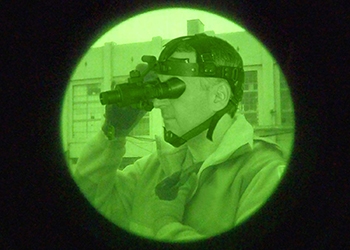
Generation
There are several generations of night vision. Each generation is considerably better than the last.
Generation 0
The first night-vision goggles used thermal imaging along with a sizeable infrared floodlight to see in the dark. The infrared floodlight covers the terrain with a bright invisible light that you can only see with thermal imaging goggles.
This type of night vision is still in use today. Many trail cameras employ Generation 0, as do many home security cameras. The technology is almost 70 years old now, so it’s not hard to find at an affordable price.
Initially developed for military applications, it had limited use in that field because anyone with thermal imaging goggles can see the floodlight, which can give up your position.
Generation 1
Generation 1 uses image intensifier tubes to collect and amplify ambient light. These were the first green screen night vision goggles. These goggles use three back to back tubes to produce a night vision scope. The center of the screen presents a clear image, but there is distortion around the edges.
Generation 2
Generation 2 night-vision uses a microchannel plate to add gain, and it eliminates the need for three back to back tubes. The microchannel plate provides 45 percent more light amplification and delivers an image that is 20% clearer than the generation 1 technology. It’s also lightweight and compact compared to Generation 1.
Generation 3
Generation 3 technology adds a gallium arsenide photocathode to the microchannel plate. This enhanced photocathode enables you to see much further away than with generation 2 technology. Generation three also adds an ion-barrier film over the multichannel channel plate that extends the life of the tube from 2000 hours to 20,000.
Omnibus
The U.S. military creates Generation 3 night-vision goggles under an Omnibus contract or OMNI. With ever new Omnibus contract, the night vision goggles receive new advancements in technology. Therefore, an Omni 3 is better than an Omni 1. Many times, a recent Omni is confused with and labeled as Generation 4 technology, mainly when it includes the new filmless technology.
White Phosphor
Another new feature included in recent Omnis is white phosphor screens instead of green. White phosphor results in a clear, high contrast black and white image.
Generation 4
There was Generation 4 technology, but the military discontinued it in favor of Gen 3. The filmless tubes used in Generation 4 were too fragile, and the military revoked their class four designations. Regardless of marketing gimmicks, there is no generation 4 currently. Often cited as Gen 4 are Gen 3 night-vision goggles with an advanced Omni that uses new filmless technology.

Gain Control
A pair of high gain night vision goggles can produce a bright image even in the darkest places, but sometimes it can be helpful if we can adjust the brightness depending on our needs.
Resolution
The generation will have a significant impact on resolution, but individual brands will also employ their proprietary technology that can also affect resolution. Higher resolution will help you see better and can bring out a lot of fine detail that might otherwise go unseen.
Sensitivity
The sensitivity rating will give you an idea of how well a model operates in the dark. Sensitivity is about how well the photo optic sensors in the lens can detect light. The higher the sensitivity, the less light the instrument needs to create a picture.
Light Spectrum
Light spectrum refers to the range of light a pair of night vision goggles can detect. The wider the range, the more light it can use. Many models will offer the ability to see into the infrared band to identify heat signatures and to see better in some situations, such as foggy or smoky conditions.
Batteries
How you power your night vision goggles is an important part of your decision. Batteries will add weight and need replacing or charging. Make sure your night vision goggles don’t drain batteries too quickly or require too many.
Weather Resistance
If you plan to use your night vision goggles in bad weather, you will need to be sure they are weather resistant. Often, these devices sit on your head, fully exposed to the wind, rain, and dirt. Your night vision goggles will need to be waterproof and have a durable construction.
Weight
The weight of your night vision goggles can be a concern if you are wearing them on your head. They tend to pull your head forward and down, and it can wear you down over time and get very heavy.
Ease of Use
The more features a pair of night-vision goggles have, the more critical it is that it is easy to use. Zoom, gain control, and switching between thermal and normal night vision may be required, and there may be more features as well.
Range
The range is about how far away you can see with your night vision goggles. The ability to see further into the distance will increase your perspective of your surroundings.
Related Read: 10 Best Thermal Vision Goggles: Reviews & Top Picks
Tips
- Always keep your night vision goggles lenses covered when exposed to bright light
- Remove batteries when not in use to prevent leakage
- Check your batteries before leaving home
- Remove the goggles from the headgear and store them in the case when not in use
- Take the time to adjust the headgear properly

Conclusion:
We hope that you have enjoyed our article covering night vision goggles and feel more confident about making your next purchase. We stand by our choice for best overall night vision goggles. The Pulsar PL74095 Night Vision Goggles has everything most casual users will need and are powerful enough to use for hunting and spotting. The Sightmark SM14070 Night Vision Goggle is our pick for the best value, and it features many of the features as our top model but at a reduced price. There are also a couple of Generation 3 devices on our list for the serious collector with a large budget.
If our article has helped you learn something new about night vision, and you believe you are closer to making your next purchase, please share this article on Facebook and Twitter.
Featured Image Credit: skeeze, Pixabay
Table of Contents
- A Quick Glance at Our Favorite Picks of 2025:
- The 8 Best Night Vision Goggles:
- 1. Pulsar PL74095 Night-Vision Goggles – Best Overall
- 2. Sightmark Night Vision Goggles – Best Value
- 3. Yukon NV Goggles – Premium Choice
- 4. Night Optics Night Vision Goggle
- 5. Night Owl Night Vision Binocular Goggles
- 6. ATN Night Vision Goggle
- 7. Armasight Night-Vision Goggles
- 8. Superior Tactical Night Vision Goggle
- Buyer’s Guide – Choosing the Best Night Vision Goggles
- Conclusion:
About the Author Robert Sparks
Robert’s obsession with all things optical started early in life, when his optician father would bring home prototypes for Robert to play with. Nowadays, Robert is dedicated to helping others find the right optics for their needs. His hobbies include astronomy, astrophysics, and model building. Originally from Newark, NJ, he resides in Santa Fe, New Mexico, where the nighttime skies are filled with glittering stars.
Related Articles:
How to Clean a Refractor Telescope: Step-by-Step Guide
How to Clean a Telescope Eyepiece: Step-by-Step Guide
How to Clean a Rifle Scope: 8 Expert Tips
Monocular vs Telescope: Differences Explained (With Pictures)
What Is a Monocular Used For? 8 Common Functions
How to Clean a Telescope Mirror: 8 Expert Tips
Brightfield vs Phase Contrast Microscopy: The Differences Explained
SkyCamHD Drone Review: Pros, Cons, FAQ, & Verdict



